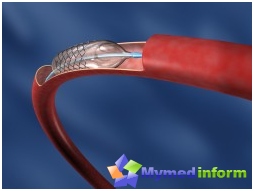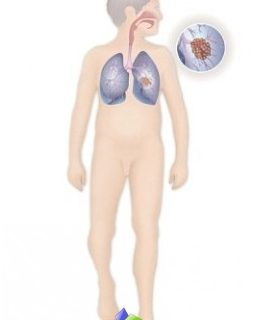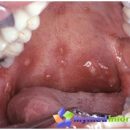Why is coronary stenting?

The heart in the body performs the role of a powerful pump that allows blood to constantly circulate, bringing oxygen and nutrients to the tissues and organs so necessary for their livelihoods. But to make such a grand work, the heart also needs these components, the delivery of them is carried out through an extensive network of coronary arteries. But if pathological changes occur in these vessels, for example, it goes the layering and growth of cholesterol sediments, connective tissue, calcium salts (calcification), then the walls of the vessels are deformed, the lumen gradually more and more. This phenomenon is called stenosis. The heart begins to suffer from insufficiency of blood supply, it works worse. In the chest periodically occur the bouts of pain, tachycardia, dyspnea, Excessive sweating, even fear of death appears. Restore the bloodstream inside the affected artery doctors can not only with the help of shunting, but also resorted to a less traumatic method - vascular stenting. For this, a special coronary stent is implanted. It is a thin, consisting of a metal tube, a metal tube, inflated by a special cylinder. When the stent is introduced into the affected vessel, then when expansion, it is pressed into the vessel wall, the lumen extension occurs. So far it is possible to improve the supply of heart muscles with blood.
Stanning testimony can be:
- asymptomatic myocardial ischemia;
- angina stress or rest;
- spicy Myocardial infarction (the operation is carried out in the first hours after the development of pathology);
- Restrenosis (that is, re-developed stenosis in the place where the stent was previously supplied);
- After AKSh (Aorticonoronal shunting), if angina renewed;
- Acute wall thrombosis, developed after stenting.
The first such operations with the introduction of the stent through the skin were carried out in 1986 in France and Switzerland.
How to steanting vessels?

MyMedinform.COM will mention complications possible during stenting.
General complications:
- Response allergic reaction when the X-ray-repeat substance.
- Throughing and repeated stenosis at the place of introducing a stent.
- Kidney violations.
- Damage to the arterial wall.
- Stroke.
- Violation of heart rhythm.
- Myocardial infarction.
- Female outcome (extremely rare).
Local complications:
- The formation of hematoma in the place where puncture was made.
- Bleeding in the puncture zone.
- Pulsating hematoma (cavity connected with the artery).
- Education between the artery and veloy.
About results and recommendations
Typically, in most cases, the results of stenting the coronary vessels are positive. The rehabilitation period is short, soon the patient can proceed to the duties performed earlier. And only 15-20% of the total number of patients operated by this method again there is a narrowing of the lumen in the vessel. But cardiologists continue to improve the stents and technique of performing an operation to reduce this indicator of statistics, save patients from heart problems.
To prevent the formation of thromboms in the arteries, the stenting zone, as well as to slow down the process Atherosclerosis, Be sure to take the following drugs:

- Clopidogrel (its synonym is Plaviks) - Not less than 12 months after surgery.
- Aspirin (synonym acetylsalicylic acid) - the period of reception of drugs containing acetylsalicylic acid produced under different names, quite long, the doctor sets it.
- Statins (they are necessary at a high indicator Cholesterol in blood).
The doctor may appoint other medicines - it all depends on the state of the patient's health.
Put right, limit cholesterol products.
Be careful to the state of your heart, do not overload yourself to excessive, unbearable physical exertion, are under the supervision of the Cardiologist. If a person having a stent, suddenly any doctor will appoint an MRI, then be sure to warn a specialist who will conduct this examination that you have a stent. Check with your cardiologist, what kind of type of stent you installed. The instructions for each stand always indicates the period during which it is necessary to refrain from MRI.
Vessel steanting is currently considered to be cardiologists one of the effective and successful ways to eliminate the narrowing of coronary arteries. It is small-acting (there is no need to open the breast). Just a puncture of 2 mm in size in a place where the catheter will be introduced. The whole procedure takes about 40 minutes. Such an operation is made by quota (system of VTPP) or on a paid environment.









